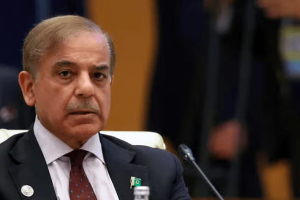The Malaysian ringgit and the Indian rupee were poised to post a fourth consecutive week of gains, and most emerging Asian currencies held firm on Friday thanks to hopes for more inflows following the Federal Reserve's dovish stance. The Singapore dollar, the South Korean won and the Philippine peso were set to enjoy a third week of rises, although their gains slowed from the prior week.
Investors booked profits from emerging Asian currencies on caution over possible dollar-buying intervention by central banks and as some of them were seen as excessively bought. "So long as the market remains focused on Fed action, then Asian currencies can make gains," said Sacha Tihanyi, senior currency strategist for Scotia Capital in Hong Kong.
A senior Malaysian bank dealer in Kuala Lumpur said emerging Asian currencies will gather further momentum next week if China's central bank fixes the yuan's midpoint strong to reflect the recent weakness in dollar. Chinese financial markets were closed this week for the Lunar New Year holidays.
The ringgit has risen 2.2 percent against the dollar this week, becoming the best-performing Asian currency, thanks to demand from funds and model accounts. If the Malaysian currency maintains the current level, that would be its largest percentage gain since the last week of October. The rupee has advanced 1.5 percent versus the dollar this week, according to Thomson Reuters data.
Dollar/ringgit fell slightly on Friday on fixing-related selling and as the euro/dollar recovered to around the 1.31 level. Earlier, dollar/ringgit rose as interbank speculators covered short positions after the pair closed the previous session above a support at 3.0400. The downside may be limited as its 14-day Relative Strength Index (RSI) fell to 19.26, well below the 30 threshold, indicating the pair stays in oversold territory.
Dollar/won ended local trade slightly higher at 1,123.2 as caution over possible intervention by South Korean foreign exchange authorities and importers' demand spurred local and offshore players to cover short positions. For the week, the won gained 1 percent against the dollar, compared with 1.2 percent the previous week.
Dollar/Philippine peso edged up as investors covered short positions before the weekend and market players were also wary of intervention, offsetting inflows. The Philippine peso has risen 0.9 percent against the dollar this week, slowing from 1.1 percent in the prior week, according to Thomson Reuters data.
BR100
10,086
Increased By
85.5 (0.85%)
BR30
31,170
Increased By
168.1 (0.54%)
KSE100
94,764
Increased By
571.8 (0.61%)
KSE30
29,410
Increased By
209 (0.72%)






















Comments
Comments are closed.